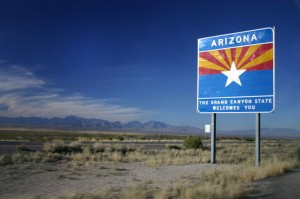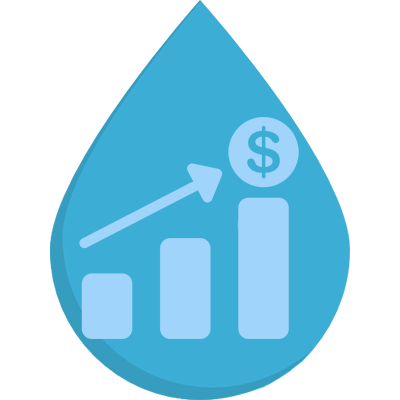What happens if a water utility collects less in revenues than it pays in expenditures in one year? It will raise some alarms, but some utilities might be able to weather that shortfall by dipping into their reserves and bounce back the following year. But what happens if a water utility collects less in revenues than it pays in expenditures in three consecutive years? That is probably a strong indication that the rates it is charging its customers are too low. Assuming that expenses cannot be significantly reduced, a rate increase is almost certainly necessary. So are utilities in this position raising rates the following year, or are there obstacles that may be chronically preventing the adoption of rate increases? In this post, I analyze ten years of financial and rates data from hundreds of North Carolina utilities to explore this question.
Tag: water rates (Page 2 of 3)

In it for the long-haul: Water rate approvals from real communication with boards

The road goes on forever, and the party never ends. ~Robert Earl Keen
The Environmental Finance Center has partnered with Arcadis, Raftelis Financial Consultants, ICMA, and Stratus Consulting to get to the bottom of what meaningful communication between water utilities and their governing boards regarding rates and finances looks like. What do the boards want to know? How do they want to know it? It’s easy in a research project to want to focus on measurable results. If you do ‘x’, then you’ll achieve ‘y’. But it’s not that easy with communication.
We spent a week interviewing water utility staff and their governing board members in the Southeast last month, and their insight on the topic should be no surprise to anyone that has been involved in any relationship. Below are some of the insights shared by board members on effective strategies about how staff can foster their support for rate increases.
by Jacob Mouw
This post was revised on September 25, 2014 to address nuances of water pricing and differences in conservation rates.
 Drinking water, despite being a necessity, is relatively cheap in regards to its importance. At around $0.005 per gallon from the tap, it is astoundingly cheaper than, say, printer ink, which ranges from $13 to $75 per ounce, and yet is vastly more important. Despite this low price, water is a commodity, particularly in dry, drought-prone regions such as the southwestern United States. Utilities can deal with low water supplies by discouraging higher water use among customers through pricing. Having a “conservation rate” entails charging high enough prices for larger volumes of water use, therefore discouraging discretionary, non-essential use and promoting conservation. In the Environmental Finance Center’s recent Water and Wastewater Rates and Rate Structures Survey in the State of Arizona, thanks to funding from the Water Infrastructure Finance Authority of Arizona, we analyzed 355 water rate structures from 324 utilities. Continue reading
Drinking water, despite being a necessity, is relatively cheap in regards to its importance. At around $0.005 per gallon from the tap, it is astoundingly cheaper than, say, printer ink, which ranges from $13 to $75 per ounce, and yet is vastly more important. Despite this low price, water is a commodity, particularly in dry, drought-prone regions such as the southwestern United States. Utilities can deal with low water supplies by discouraging higher water use among customers through pricing. Having a “conservation rate” entails charging high enough prices for larger volumes of water use, therefore discouraging discretionary, non-essential use and promoting conservation. In the Environmental Finance Center’s recent Water and Wastewater Rates and Rate Structures Survey in the State of Arizona, thanks to funding from the Water Infrastructure Finance Authority of Arizona, we analyzed 355 water rate structures from 324 utilities. Continue reading
It’s college football season again, and thoughts among many in the South, and elsewhere, turn to tailgating and touchdowns, hot dogs and sodas, field goals and fun. (Here in Chapel Hill, we like to remember alumnus Andy Griffith’s famous 1953 comical monologue about football, “What It Was, Was Football.”) Meanwhile, those of us at the UNC Environmental Finance Center (EFC) have completed our first-ever Alabama Residential Water and Wastewater Rates Dashboard, which, in fact, ties in with – you guessed it – football! (As well as tying in with the affordability of water and sewer bills by customers in Alabama, of course.) Continue reading
As mentioned in last week’s blog post, some utilities are creatively setting varying base charges for subgroups of customer classes in order to more equitably distribute the (fixed) costs of the utility among customers with varying demands. One way this is being done is by tailoring the base charge based on each individual customer’s water use levels. No doubt, consumption-determined base charges are rare among water utilities today. However, there are some examples, and these examples demonstrate two methods of determining base charges based on water use.








